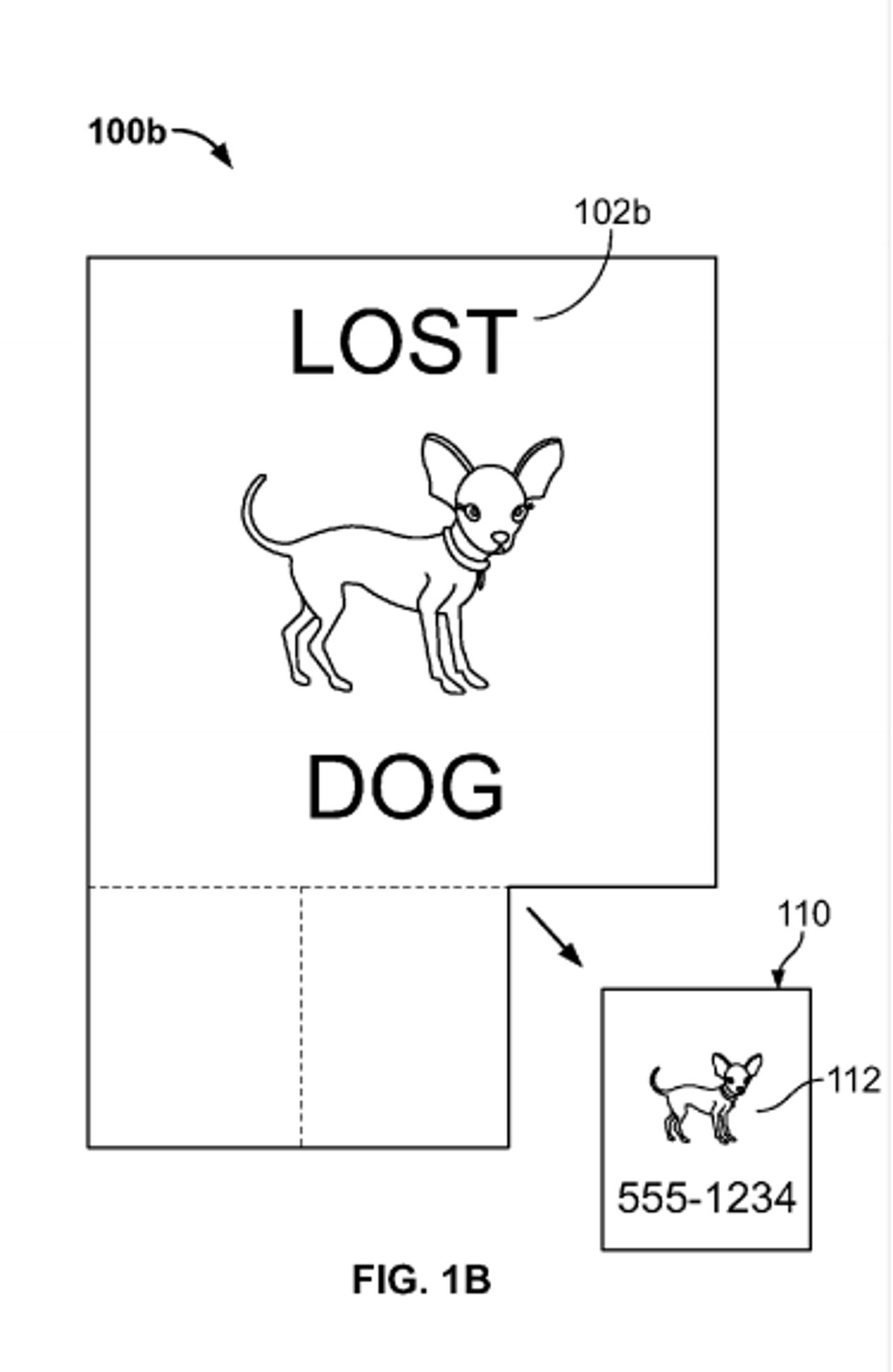Google's weirdest tech yet: Screens that you can tear and share


A 'Lost Dog' poster. Google's vision of one use for a tearable screen.
In the future screens won't just bend and roll, they'll be able to be ripped apart.
So predicts Google in its latest patent filing, which describes a display that can be torn into portions.
The tearable display would be made of multiple connected elements -- each capable of functioning as a separate display.
Google predicts tearable screens would be good for sharing information: where ripping away a small section of screen would see information transferred to that scrap of the display.
Foldable, swappable, invisible: 12 visions of tomorrow's tablet
In an example, Google shows a diagram of a 'Lost Dog' poster that is actually a screen, with strips of screen at the bottom that can ripped away to get the details of the owner -- much as is the case with paper posters today.
In another use case, Google shows a screen advertising an item in a shop, with a detachable section of screen in the top-right corner, which can be ripped off by shoppers to get a coupon.
Such displays would not only be able to be torn apart, they would be able to be pieced back together again. Google says that portions of screen would be able to reattached to the display they were ripped from, combined with other strips torn from the display or even added to a new displays.
In its filing, Google suggests such a screen could be based on LED, OLED, e-ink or other display technology.
It even suggests tearable screens could be composed of more than one display type. For example, in the case of the 'Lost Dog' poster, the main poster would be a bright OLED screen to attract attention, while the detachable strips would be an e-ink display that wouldn't require a processor for the content to remain visible. In other instances, the portion of display that is torn away could retain the ability to display content by including one or more processors, a power supply, and storage media.